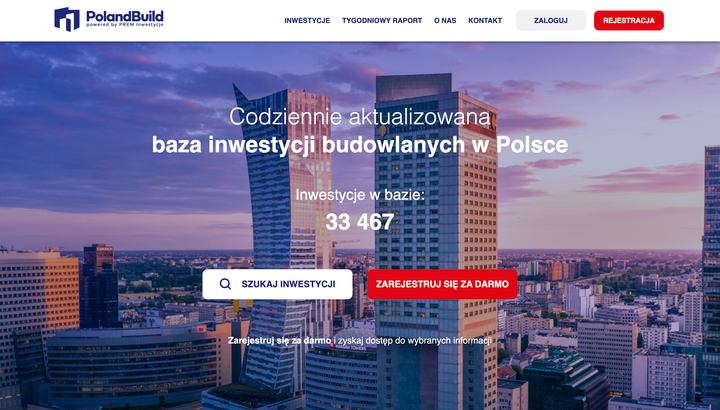PolandBuild – A comprehensive database and advanced search platform for construction projects.
Web development
See the LIVE projectPolandBuild is an online platform that gives users access to a comprehensive database of construction projects happening across Poland. It provides detailed information on more than 40,000 projects, with full access available after registration and subscription.
Tools and technologies used












